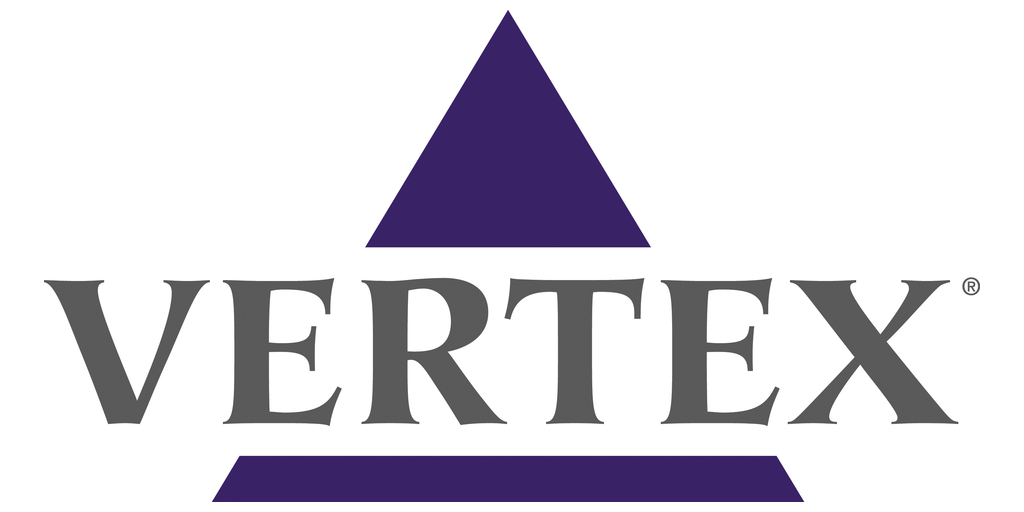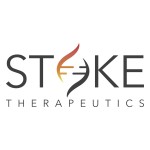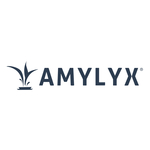Yescarta® Delivers Consistent Safety, Efficacy, and Quality of Life Benefits Across Broad Range of Relapsed/Refractory Large B-cell Lymphoma Patients in New Analysis at ASH 2025
Yescarta® Delivers Consistent Safety, Efficacy, and Quality of Life Benefits Across Broad Range of Relapsed/Refractory Large B-cell Lymphoma Patients in New Analysis at ASH 2025
– Benefits Seen Regardless of Eligibility for Previous Standard of Care of High-Dose Chemotherapy and Stem Cell Transplant for Second-Line Treatment –
SANTA MONICA, Calif.–(BUSINESS WIRE)–Kite, a Gilead Company (Nasdaq: GILD), presented a new analysis today demonstrating that second-line Yescarta® (axicabtagene ciloleucel) therapy offers consistent benefits in patients with relapsed/refractory large B-cell lymphoma (R/R LBCL), even among those ineligible for the previous standard of care, high-dose chemotherapy followed by an autologous stem cell transplant (ASCT).
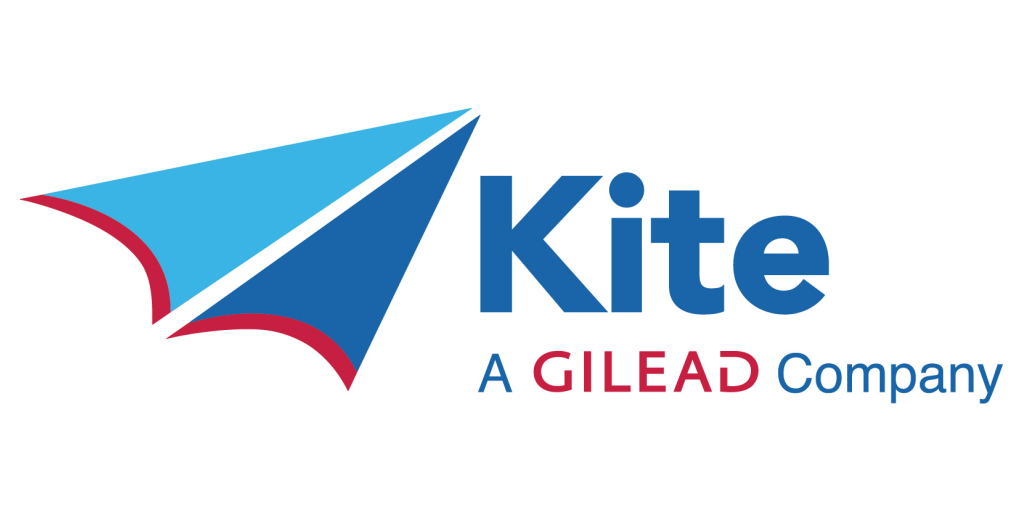

Results were shared from the combined analysis of four-year data from the landmark ZUMA-7 Phase 3 pivotal study of Yescarta for R/R LBCL and two-year data from the Phase 2 ALYCANTE study, designed by French collaborative group LYSA and sponsored by LYSARC, for transplant-ineligible patients. The findings were presented (Abstract #3714) during the 67th American Society of Hematology (ASH) Annual Meeting and Exposition.
“Patients with large B-cell lymphoma who are ineligible for stem cell transplants face limited treatment options and poor outcomes due to age, co-morbidities and other factors,” said Professor Roch Houot, Head of Haematology Department, University Hospital of Rennes, France and coordinator of the ALYCANTE study. “This analysis reinforces that Yescarta should be considered earlier in a patient’s treatment paradigm given its curative potential as a one-time treatment and further establishes CAR T as the new standard of care for second-line treatment of large B-cell lymphoma.”
The efficacy analyses included 178 and 69 patients from the ZUMA-7 and ALYCANTE trials, respectively.
After two years:
-
Overall survival (OS) rate, meaning the percentage of patients in the trials who were still alive, was 64.9% in the pooled analysis, 62.8% in ZUMA-7, and 70.8% in ALYCANTE. Historically, the prognosis for R/R LBCL was very poor; prior to the introduction of new therapies like CAR Ts, the two-year survival rate was only about 20%.
-
Event-free survival (EFS) rate, meaning the percentage of patients who were still alive and had not seen their disease worsen or experienced other major complications, was 45.2% in the pooled analysis, 45.4% in ZUMA-7, and 44.7% in ALYCANTE.
-
Progression-free survival (PFS) rate, meaning the percentage of patients who were still living without their disease getting worse, was 47.4% in the pooled analysis, 47.6% in ZUMA-7, and 46.8% in ALYCANTE.
Additionally:
-
After three months, 55.6% of the patients in the pooled analysis showed a complete metabolic response (CMR), meaning their disease was barely, if at all, detectable. CMR was 51.2% in ZUMA-7 and 67.7% in ALYCANTE.
-
After one year after treatment, overall response rate (ORR), meaning patients saw their cancer significantly shrink or completely disappear, was 46.6% in the pooled analysis, 46.5% in ZUMA-7, and 46.8% in ALYCANTE.
-
For those patients who responded well to treatment, 61% saw that positive response continue after a full year. Pooled 12-month duration of response (DOR) was 61.0%, 60.6% in ZUMA-7, and 62.1% in ALYCANTE.
In the safety analysis, which included 170 ZUMA-7 and 62 ALYCANTE Yescarta-infused patients, safety outcomes were comparable between the two studies. The incidence of grade ≥3 treatment-emergent adverse events (TEAEs) was similar between the ZUMA-7 and ALYCANTE patients, 91.2% and 88.7% respectively, with a pooled incidence of 90.5%. Pooled incidence of grade ≥3 neurologic events, neutropenias, and anemia were 19.8% (ZUMA-7 21.2%, ALYCANTE 16.1%), 64.7% (ZUMA-7 70.0%, ALYCANTE 50.0%), and 27.6% (ZUMA-7 30.0%, ALYCANTE 21.0%), respectively.
Across both studies, patients generally experienced similar long-term improvements in their quality of life after initial treatment challenges. At Day 50 after treatment, patients in both trials showed a transient decline (-7.2 in ZUMA-7 and -6.3 in ALYCANTE) for EORTC QLQ-C30 global health status, and -12.9 for physical function in both. However, patients in ALYCANTE reported a meaningful improvement in their overall well-being (EQ-5D-5L VAS) by Day 100 (+9.9), while ZUMA-7 patients reached a similar meaningful improvement (+9.9) at Day 150, which continued through Month 12. By month 24, both ALYCANTE and ZUMA-7 showed continued improvements of global health status.
“This analysis offers compelling evidence of Yescarta’s consistent, durable efficacy and safety profile across a broad range of patients, including those with difficult-to-treat relapsed or refractory disease who historically faced very limited options and a poor prognosis,” said Gallia Levy, MD, PhD, Senior Vice President and Global Head of Development, Kite. “These robust data further reinforce Yescarta’s potential as a treatment with curative intent, reflecting Kite’s deep commitment to transforming patient outcomes.”
About LBCL
Globally, LBCL is the most common type of non-Hodgkin lymphoma. In the United States, more than 18,000 people are diagnosed with LBCL each year. About 30-40% of patients with LBCL will need second-line treatment, as their cancer will either relapse (return) or become refractory (not respond) to initial treatment.
About ALYCANTE Study
ALYCANTE (NCT04531046) is a Phase 2 study evaluating the efficacy and safety of Yescarta in patients with R/R LBCL after one prior line of therapy who were deemed ineligible for high-dose chemotherapy and ASCT, sponsored by the LYSA/LYSARC collaborative group. The primary endpoint was the complete metabolic response at three months from Yescarta infusion. The study was funded by Kite, a Gilead Company, and carried out with Yescarta manufactured by Kite.
About LYSA and LYSARC
The Lymphoma Study Association (LYSA) is an independent, multidisciplinary network and an international leader in clinical lymphoma and CLL/WM research. With over 500 experts and a network of 90 centers across France, Belgium, and Portugal, it conducts clinical trials ranging from early-stage treatment evaluation to the development of new therapeutic strategies.
The Lymphoma Academic Research Organization (LYSARC), based in France, is the largest European academic organization dedicated to clinical lymphoma and CLL/WM research. As the operational arm of LYSA, LYSARC sponsors and leads research initiatives and operates specialized platforms in pathology, biology, and imaging. It manages and coordinates numerous clinical trials (phases 1 to 4) each year, as well as non-interventional and data reuse studies. LYSARC is a key research expert, leading innovative projects on an international scale.
About ZUMA-7 Study
Based on the primary efficacy endpoint results of ZUMA-7, the U.S. Food & Drug Administration approved Yescarta as initial treatment of R/R LBCL in April 2022. The EU granted approval in October 2022, followed by approvals in several other countries including Australia, Canada, Great Britain, Israel, Japan and Switzerland.
ZUMA-7 is a randomized, open-label, global, multicenter, Phase 3 study evaluating the safety and efficacy of Yescarta versus standard of care (SOC) for second-line therapy in adult patients with relapsed or refractory LBCL within 12 months of first-line therapy. The SOC for initial treatment of R/R LBCL has been a multi-step process involving platinum-based salvage combination chemotherapy regimen, and for responders, HDT and ASCT. In the study, 359 patients in 77 centers around the world were randomized (1:1) to receive a single infusion of Yescarta or SOC second-line treatment. The primary endpoint was EFS as determined by blinded central review and defined as the time from randomization to the earliest date of disease progression per Lugano Classification, commencement of new lymphoma therapy, or death from any cause. Key secondary endpoints include objective response rate and OS. Additional secondary endpoints included patient-reported outcomes (PROs) and safety. Per hierarchical testing of primary and key secondary endpoints and group sequential testing of OS, an interim analysis of OS occurred at the time of the primary EFS.
About Yescarta
Please see full Prescribing Information, including BOXED WARNING below and Medication Guide.
YESCARTA is a CD19-directed genetically modified autologous T cell immunotherapy indicated for the treatment of:
-
Adult patients with large B-cell lymphoma that is refractory to first-line chemoimmunotherapy or that relapses within 12 months of first-line chemoimmunotherapy.
-
Adult patients with relapsed or refractory large B-cell lymphoma after two or more lines of systemic therapy, including diffuse large B-cell lymphoma (DLBCL) not otherwise specified, primary mediastinal large B-cell lymphoma, high grade B-cell lymphoma, and DLBCL arising from follicular lymphoma.
Limitations of Use: YESCARTA is not indicated for the treatment of patients with primary central nervous system lymphoma.
U.S. IMPORTANT SAFETY INFORMATION
BOXED WARNING: CYTOKINE RELEASE SYNDROME, NEUROLOGIC TOXICITIES, and SECONDARY HEMATOLOGICAL MALIGNANCIES
-
Cytokine Release Syndrome (CRS), including fatal or life-threatening reactions, occurred in patients receiving YESCARTA. Do not administer YESCARTA to patients with active infection or inflammatory disorders. Treat severe or life-threatening CRS with tocilizumab or tocilizumab and corticosteroids.
-
Neurologic toxicities, including fatal or life-threatening reactions, occurred in patients receiving YESCARTA, including concurrently with CRS or after CRS resolution. Monitor for neurologic toxicities after treatment with YESCARTA. Provide supportive care and/or corticosteroids, as needed.
-
T cell malignancies have occurred following treatment of hematologic malignancies with BCMA- and CD19-directed genetically modified autologous T cell immunotherapies, including YESCARTA.
CYTOKINE RELEASE SYNDROME (CRS)
CRS, including fatal or life-threatening reactions, occurred following treatment with YESCARTA. CRS occurred in 90% (379/422) of patients with non-Hodgkin lymphoma (NHL), including ≥ Grade 3 CRS in 9%. CRS occurred in 93% (256/276) of patients with large B-cell lymphoma (LBCL), including ≥ Grade 3 in 9%. Among patients with LBCL who died after receiving YESCARTA, 4 had ongoing CRS events at the time of death. For patients with LBCL in ZUMA-1, the median time to onset of CRS was 2 days following infusion (range: 1-12 days) and the median duration was 7 days (range: 2-58 days). For patients with LBCL in ZUMA-7, the median time to onset of CRS was 3 days following infusion (range: 1-10 days) and the median duration was 7 days (range: 2-43 days).
CRS occurred in 84% (123/146) of patients with indolent non-Hodgkin lymphoma (iNHL) in ZUMA-5, including ≥ Grade 3 CRS in 8%. Among patients with iNHL who died after receiving YESCARTA, 1 patient had an ongoing CRS event at the time of death. The median time to onset of CRS was 4 days (range: 1-20 days) and median duration was 6 days (range: 1-27 days) for patients with iNHL.
Key manifestations of CRS (≥ 10%) in all patients combined included fever (85%), hypotension (40%), tachycardia (32%), chills (22%), hypoxia (20%), headache (15%), and fatigue (12%). Serious events that may be associated with CRS include, cardiac arrhythmias (including atrial fibrillation and ventricular tachycardia), renal insufficiency, cardiac failure, respiratory failure, cardiac arrest, capillary leak syndrome, multi-organ failure, and hemophagocytic lymphohistiocytosis/macrophage activation syndrome (HLH/MAS).
The impact of tocilizumab and/or corticosteroids on the incidence and severity of CRS was assessed in 2 subsequent cohorts of LBCL patients in ZUMA-1. Among patients who received tocilizumab and/or corticosteroids for ongoing Grade 1 events, CRS occurred in 93% (38/41), including 2% (1/41) with Grade 3 CRS; no patients experienced a Grade 4 or 5 event. The median time to onset of CRS was 2 days (range: 1-8 days) and the median duration of CRS was 7 days (range: 2-16 days). Prophylactic treatment with corticosteroids was administered to a cohort of 39 patients for 3 days beginning on the day of infusion of YESCARTA. Thirty-one of the 39 patients (79%) developed CRS and were managed with tocilizumab and/or therapeutic doses of corticosteroids with no patients developing ≥ Grade 3 CRS. The median time to onset of CRS was 5 days (range: 1-15 days) and the median duration of CRS was 4 days (range: 1-10 days). Although there is no known mechanistic explanation, consider the risk and benefits of prophylactic corticosteroids in the context of pre-existing comorbidities for the individual patient and the potential for the risk of Grade 4 and prolonged neurologic toxicities.
Confirm that 2 doses of tocilizumab are available prior to infusion of YESCARTA. Monitor patients at least daily for 7 days following infusion for signs and symptoms of CRS. Monitor patients for signs or symptoms of CRS for 2 weeks after infusion. Counsel patients to seek immediate medical attention should signs or symptoms of CRS occur at any time. At the first sign of CRS, institute treatment with supportive care, tocilizumab, or tocilizumab and corticosteroids as indicated.
NEUROLOGIC TOXICITIES
Neurologic toxicities including immune effector cell-associated neurotoxicity syndrome (ICANS) that were fatal or life-threatening occurred following treatment with YESCARTA. Neurologic toxicities occurred in 78% (330/422) of patients with NHL receiving YESCARTA, including ≥ Grade 3 in 25%.
Neurologic toxicities occurred in 87% (94/108) of patients with LBCL in ZUMA-1, including ≥ Grade 3 in 31% and in 74% (124/168) of patients in ZUMA-7 including ≥ Grade 3 in 25%. The median time to onset was 4 days (range: 1-43 days) and the median duration was 17 days for patients with LBCL in ZUMA-1. The median time to onset for neurologic toxicity was 5 days (range: 1-133 days) and median duration was 15 days in patients with LBCL in ZUMA-7. Neurologic toxicities occurred in 77% (112/146) of patients with iNHL, including ≥ Grade 3 in 21%. The median time to onset was 6 days (range: 1-79 days) and the median duration was 16 days. Ninety-eight percent of all neurologic toxicities in patients with LBCL and 99% of all neurologic toxicities in patients with iNHL occurred within the first 8 weeks of YESCARTA infusion. Neurologic toxicities occurred within the first 7 days of infusion in 87% of affected patients with LBCL and 74% of affected patients with iNHL.
The most common neurologic toxicities (≥ 10%) in all patients combined included encephalopathy (50%), headache (43%), tremor (29%), dizziness (21%), aphasia (17%), delirium (15%), and insomnia (10%). Prolonged encephalopathy lasting up to 173 days was noted. Serious events, including aphasia, leukoencephalopathy, dysarthria, lethargy, and seizures occurred. Fatal and serious cases of cerebral edema and encephalopathy, including late-onset encephalopathy, have occurred.
The impact of tocilizumab and/or corticosteroids on the incidence and severity of neurologic toxicities was assessed in 2 subsequent cohorts of LBCL patients in ZUMA-1. Among patients who received corticosteroids at the onset of Grade 1 toxicities, neurologic toxicities occurred in 78% (32/41) and 20% (8/41) had Grade 3 neurologic toxicities; no patients experienced a Grade 4 or 5 event. The median time to onset of neurologic toxicities was 6 days (range: 1-93 days) with a median duration of 8 days (range: 1-144 days). Prophylactic treatment with corticosteroids was administered to a cohort of 39 patients for 3 days beginning on the day of infusion of YESCARTA. Of those patients, 85% (33/39) developed neurologic toxicities; 8% (3/39) developed Grade 3 and 5% (2/39) developed Grade 4 neurologic toxicities. The median time to onset of neurologic toxicities was 6 days (range: 1-274 days) with a median duration of 12 days (range: 1-107 days). Prophylactic corticosteroids for management of CRS and neurologic toxicities may result in higher grade of neurologic toxicities or prolongation of neurologic toxicities, delay the onset, and decrease the duration of CRS.
Monitor patients for signs and symptoms of neurologic toxicities following infusion at least daily for 7 days; and for 2 weeks thereafter and treat promptly. Advise patients to avoid driving for at least 2 weeks following infusion.
HYPERSENSITIVITY REACTIONS
Allergic reactions may occur with the infusion of YESCARTA. Serious hypersensitivity reactions, including anaphylaxis, may be due to dimethyl sulfoxide (DMSO) or residual gentamicin in YESCARTA.
SERIOUS INFECTIONS
Severe or life-threatening infections occurred after YESCARTA infusion. Infections (all grades) occurred in 45% of patients with NHL. Grade 3 or higher infections occurred in 17% of patients, including ≥ Grade 3 infections with an unspecified pathogen in 12%, bacterial infections in 5%, viral infections in 3%, and fungal infections in 1%. YESCARTA should not be administered to patients with clinically significant active systemic infections. Monitor patients for signs and symptoms of infection before and after infusion and treat appropriately. Administer prophylactic antimicrobials according to local guidelines.
Febrile neutropenia was observed in 36% of patients with NHL and may be concurrent with CRS. In the event of febrile neutropenia, evaluate for infection and manage with broad-spectrum antibiotics, fluids, and other supportive care as medically indicated.
In immunosuppressed patients, including those who have received YESCARTA, life-threatening and fatal opportunistic infections including disseminated fungal infections (e.g., candida sepsis and aspergillus infections) and viral reactivation (e.g., human herpes virus-6 [HHV-6] encephalitis and JC virus progressive multifocal leukoencephalopathy [PML]) have been reported. The possibility of HHV-6 encephalitis and PML should be considered in immunosuppressed patients with neurologic events and appropriate diagnostic evaluations should be performed.
Hepatitis B virus (HBV) reactivation, in some cases resulting in fulminant hepatitis, hepatic failure, and death, has occurred in patients treated with drugs directed against B cells, including YESCARTA. Perform screening for HBV, HCV, and HIV and management in accordance with clinical guidelines before collection of cells for manufacturing.
PROLONGED CYTOPENIAS
Patients may exhibit cytopenias for several weeks following lymphodepleting chemotherapy and YESCARTA infusion. Grade 3 or higher cytopenias not resolved by Day 30 following YESCARTA infusion occurred in 39% of all patients with NHL and included neutropenia (33%), thrombocytopenia (13%), and anemia (8%). Monitor blood counts after infusion.
HYPOGAMMAGLOBULINEMIA
B-cell aplasia and hypogammaglobulinemia can occur in patients receiving YESCARTA. Hypogammaglobulinemia was reported as an adverse reaction in 14% of all patients with NHL. Monitor immunoglobulin levels after treatment and manage using infection precautions, antibiotic prophylaxis, and immunoglobulin replacement.
The safety of immunization with live viral vaccines during or following YESCARTA treatment has not been studied. Vaccination with live virus vaccines is not recommended for at least 6 weeks prior to the start of lymphodepleting chemotherapy, during YESCARTA treatment, and until immune recovery following treatment.
SECONDARY MALIGNANCIES
Patients treated with YESCARTA may develop secondary malignancies. T cell malignancies have occurred following treatment of hematologic malignancies with BCMA- and CD19-directed genetically modified autologous T cell immunotherapies, including YESCARTA. Mature T cell malignancies, including CAR-positive tumors, may present as soon as weeks following infusion, and may include fatal outcomes.
Monitor life-long for secondary malignancies. In the event that a secondary malignancy occurs, contact Kite at 1-844-454-KITE (5483) to obtain instructions on patient samples to collect for testing.
ADVERSE REACTIONS
The most common adverse reactions (incidence ≥ 20%) in:
-
patients with LBCL in ZUMA-7 included fever, CRS, fatigue, hypotension, encephalopathy, tachycardia, diarrhea, headache, musculoskeletal pain, nausea, febrile neutropenia, chills, cough, infection with unspecified pathogen, dizziness, tremor, decreased appetite, edema, hypoxia, abdominal pain, aphasia, constipation, and vomiting.
-
patients with LBCL in ZUMA-1 included CRS, fever, hypotension, encephalopathy, tachycardia, fatigue, headache, decreased appetite, chills, diarrhea, febrile neutropenia, infections with pathogen unspecified, nausea, hypoxia, tremor, cough, vomiting, dizziness, constipation, and cardiac arrhythmias.
Please see full Prescribing Information, including BOXED WARNING and Medication Guide.
About Gilead and Kite Oncology
Gilead and Kite Oncology are working to transform how cancer is treated. We are innovating with next-generation therapies, combinations and technologies to deliver improved outcomes for people with cancer. We are purposefully building our oncology portfolio and pipeline to address the greatest gaps in care. From antibody-drug conjugate technologies and small molecules to cell therapy-based approaches, we are creating new possibilities for people with cancer.
Forward-Looking Statements
This press release includes forward-looking statements, within the meaning of the Private Securities Litigation Reform Act of 1995 that are subject to risks, uncertainties and other factors, including the ability of Gilead and Kite to initiate, progress or complete clinical trials within currently anticipated timelines or at all, and the possibility of unfavorable results from ongoing or additional clinical studies, including those involving Yescarta (such as ZUMA-7 and ALYCANTE); uncertainties relating to regulatory applications and related filing and approval timelines, including pending or potential applications for indications currently under evaluation; the possibility that Gilead and Kite may make a strategic decision to discontinue development of these programs and, as a result, these programs may never be successfully commercialized for the indications currently under evaluation; and any assumptions underlying any of the foregoing. These and other risks are described in detail in Gilead’s Quarterly Report on Form 10-Q for the quarter ended September 30, 2025, as filed with the U.S. Securities and Exchange Commission. These risks, uncertainties and other factors could cause actual results to differ materially from those referred to in the forward-looking statements. All statements other than statements of historical fact are statements that could be deemed forward-looking statements. The reader is cautioned that any such forward-looking statements are not guarantees of future performance and involve risks and uncertainties and is cautioned not to place undue reliance on these forward-looking statements. All forward-looking statements are based on information currently available to Gilead and Kite, and Gilead and Kite assume no obligation and disclaim any intent to update any such forward-looking statements.
Yescarta, Gilead, the Gilead logo, Kite, the Kite logo are trademarks of Gilead Sciences, Inc., or its related companies.
For more information on Kite, please visit the company’s website at www.kitepharma.com. Follow Kite on social media on
Contacts
Ashleigh Koss, Media
public_affairs@gilead.com
Jacquie Ross, Investors
investor_relations@gilead.com
Read full story here





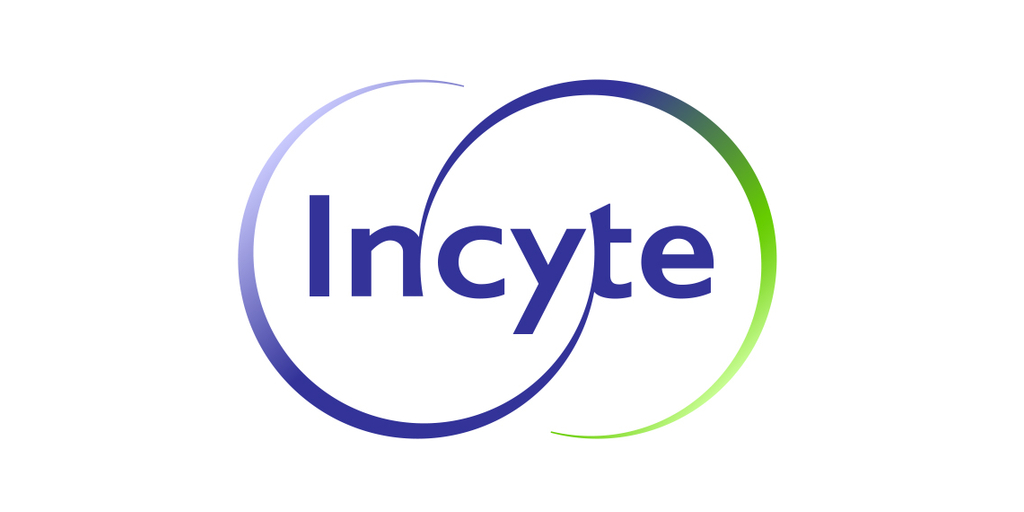







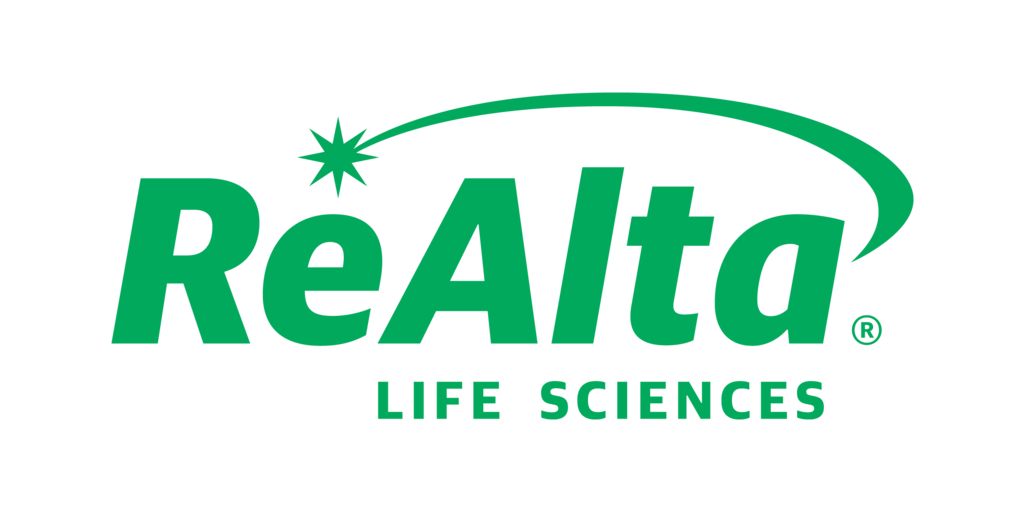

.jpg)
.jpg)
